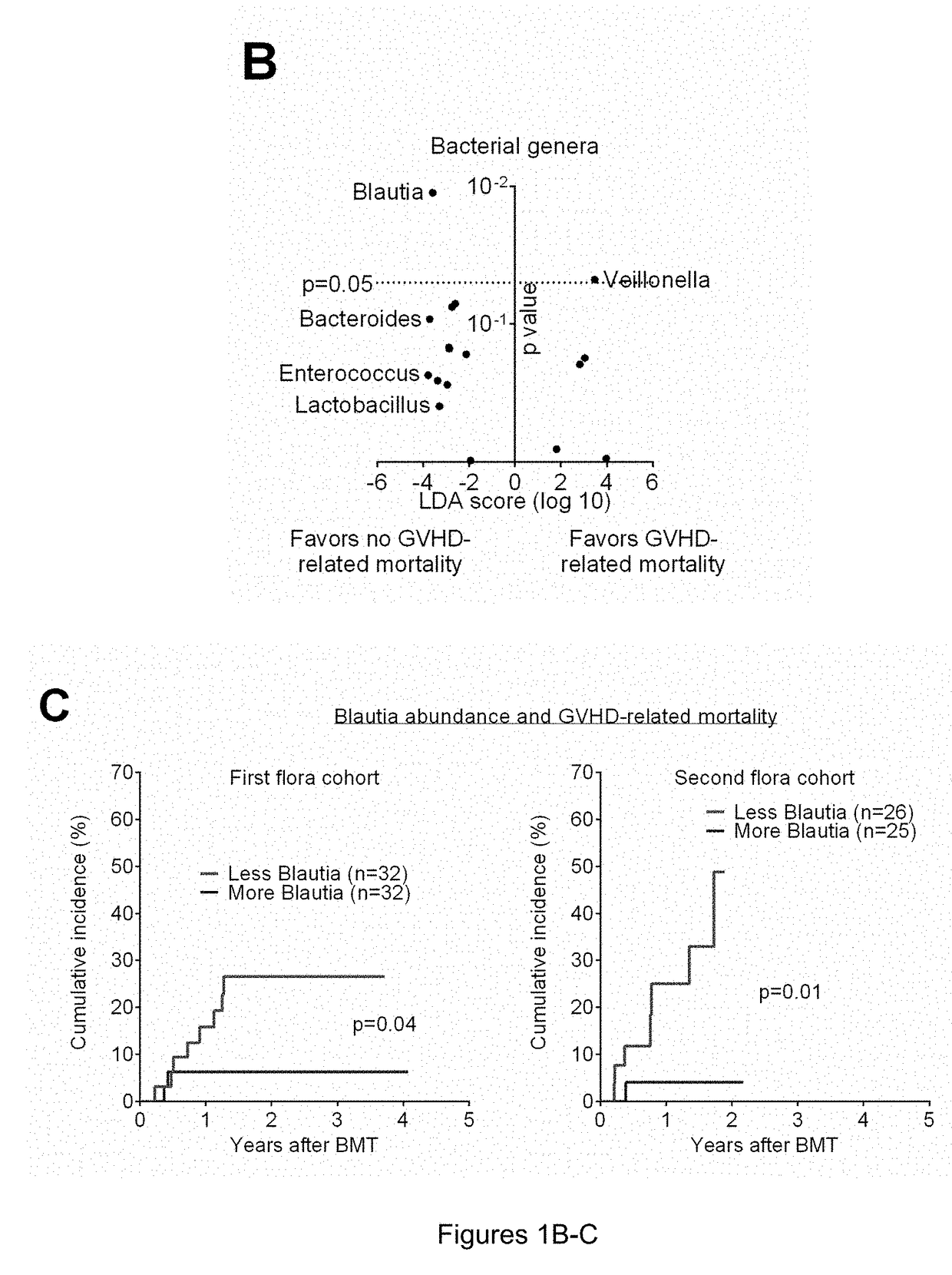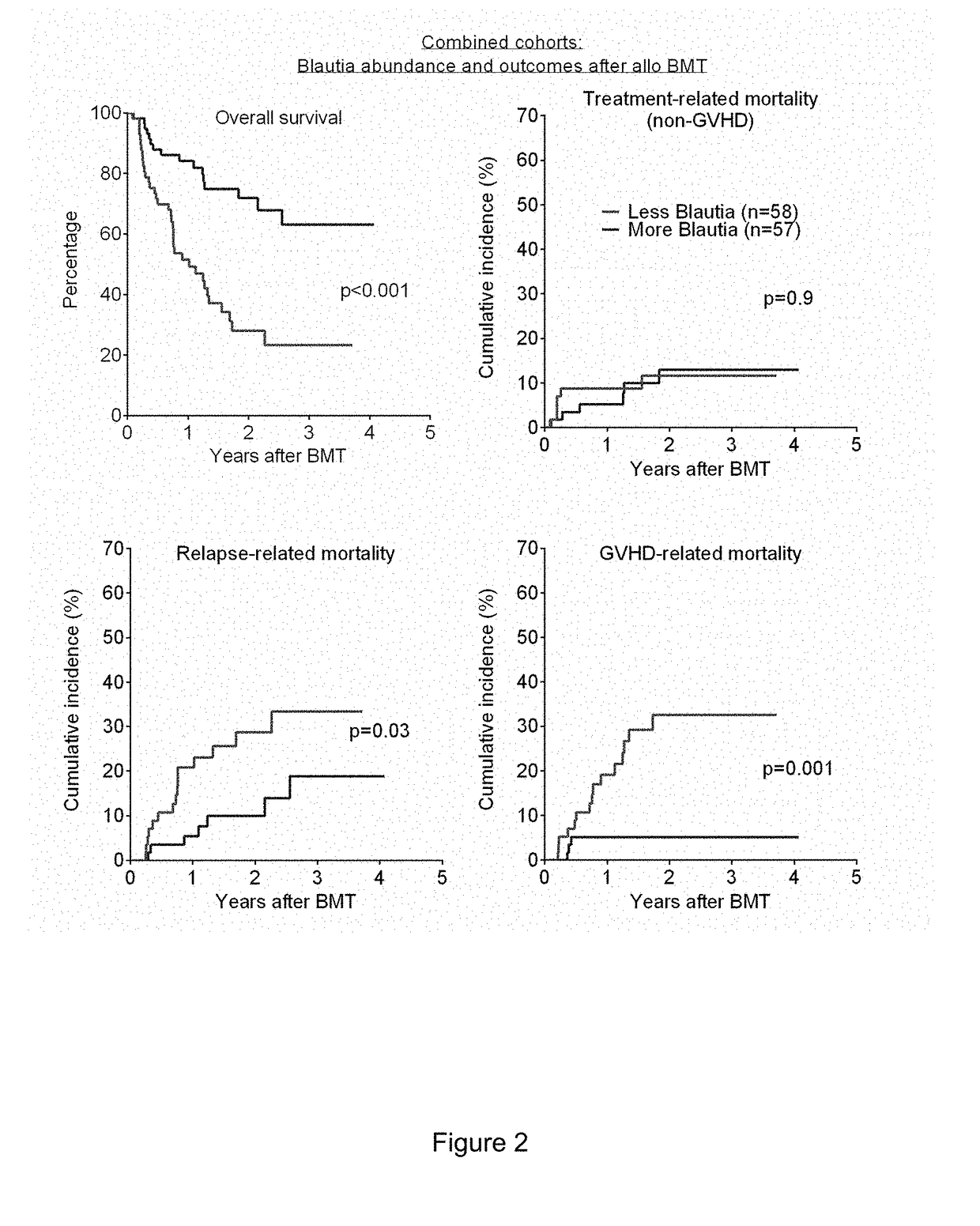Intestinal microbiota and gvhd
a technology of intestinal microbiota and gvhd, which is applied in the field of gvhd versus host disease, can solve the problems of increasing the risk of infection and disease recurrence, gvhd continues to be a leading cause of mortality in this population, and immune suppression strategies are only partially effective at preventing gvhd. , to achieve the effect of reducing the likelihood of or preventing gvhd, reducing the risk of developing
- Summary
- Abstract
- Description
- Claims
- Application Information
AI Technical Summary
Benefits of technology
Problems solved by technology
Method used
Image
Examples
examples
Selection of Patients and Method for Specimen Collection
[0089]In one study, subjects analyzed retrospectively for impact of antibiotics on clinical outcomes consisted of 283 adult patients undergoing all-HSCT at Memorial Sloan Kettering Cancer Center (MSKCC) from 1994 to 2013. Patients who received conventional grafts (non-T cell depleted) were included in this study; patients who received ex-vivo T cell depleted grafts or peri-transplant alemtuzumab were excluded. Stool specimens were collected and stored weekly over the course of the transplant hospitalization. The study was approved by the Institutional Review Board at MSKCC. All study patients provided written informed consent for biospecimen collection and analysis.
[0090]GVHD was diagnosed clinically, confirmed pathologically by biopsy whenever possible, and classified according to historical consensus criteria as described previously (see Rowlings P A, Przepiorka D, Klein J P, et al. IBMTR Severity Index for grading acute graf...
PUM
| Property | Measurement | Unit |
|---|---|---|
| Fraction | aaaaa | aaaaa |
| Fraction | aaaaa | aaaaa |
| Fraction | aaaaa | aaaaa |
Abstract
Description
Claims
Application Information
 Login to View More
Login to View More - R&D
- Intellectual Property
- Life Sciences
- Materials
- Tech Scout
- Unparalleled Data Quality
- Higher Quality Content
- 60% Fewer Hallucinations
Browse by: Latest US Patents, China's latest patents, Technical Efficacy Thesaurus, Application Domain, Technology Topic, Popular Technical Reports.
© 2025 PatSnap. All rights reserved.Legal|Privacy policy|Modern Slavery Act Transparency Statement|Sitemap|About US| Contact US: help@patsnap.com



